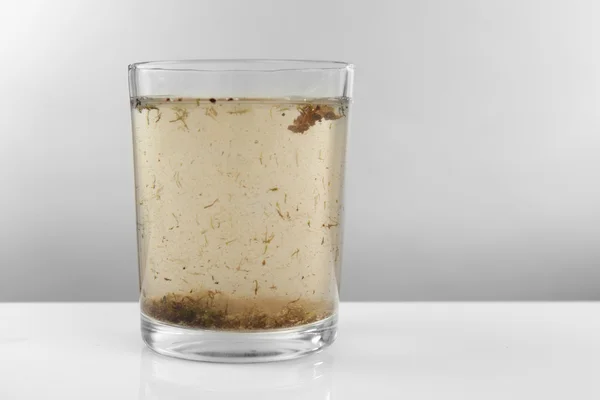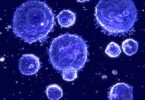Camp Lejeune is a popular military training facility which is situated in North Carolina. It was constructed in 1941 and is still an active Marine Corps base. Although the base is responsible for producing hundreds of thousands of trained marine personnel to serve their country, it is also known for being the site with one of the worst drinking-water contaminants in the United States.
Between 1953 and 1987, hundreds of thousands of marine personnel, their families, friends, and civilian employees working or living at the base were exposed to harmful chemicals that were in the water. These toxic chemicals include perchloroethylene (a dry-cleaning agent), vinyl chloride, trichloroethylene (a metal degreaser), and benzene.
Furthermore, contaminated water at Camp Lejeune was believed to contain concentrations of these volatile organic compounds (VOC) from 240 to 3400 times the levels allowed by safety standards.
The Agency for Toxic Substances and Disease Registry (ATSDR) conducted numerous studies on these VOCs to find out whether the toxic water could cause cancer. They found evidence showing that the contaminants are linked to cancer. Some of the cancers that may have been caused at the military base include:
Liver cancer
This is cancer that starts in the liver and is also known as hepatic cancer. Symptoms of this disease include upper abdominal pain, losing weight, vomiting, and nausea. Other signs could be white chalky stools and yellow skin discoloration.
Some of the potential causes of Liver cancer include diabetes, alcohol consumption, obesity, cigarette smoking, and long-term hepatitis. Additionally, exposure to toxic chemicals such as the VOC found in the military base may also cause the development of this cancer.
Unfortunately, this disease is usually diagnosed late because the symptoms usually appear in the late stages. Therefore, as soon as it is found, it needs to be aggressively treated to reduce the risk of succumbing to the disease. The survival rate of this disease depends on where the cancer is located, the stage when it was discovered and whether it has spread to other body organs or not.
Kidney cancer
Kidney cancer has also been linked to the drinking water at the military base. The disease can be discovered through radiology testing, a physical exam, or a biopsy. If it is discovered early, then it can be stopped from spreading. Moreover, when it is treated early, chances of survival also increase.
Bladder cancer
There are multiple causes of bladder cancer, and exposure to toxic chemicals and water is one of them. In fact, there is enough medical evidence that Trichloroethylene (TCE), one of the primary contaminants in the water at the base, causes bladder cancer. Furthermore, Tetrachloroethylene (PCE), one of the toxic compounds at the military base, has also been linked to bladder cancer.
Some signs of this disease include pain during urination, blood in the urine, and lower back pain. In addition, the disease can be diagnosed by conducting a urinalysis, physical exam, or cystoscopy, which is a procedure where a scope is inserted into the ureter and a lens is used to view for signs of the disease.
It is important to get diagnosed and treated early to prevent it from spreading to other parts of the body. Treatment options include radiation therapy, surgery, immunotherapy, and chemotherapy, among others. The survival rate of this disease depends on which stage it is diagnosed and how effective the treatment is.
Breast cancer
A study conducted by the ATSDR found a link between the toxic liquid and male breast cancer at the base in North Carolina. The chemicals studied by the body were DCE, PCE, and Vinyl Chloride.
It is important to get tested for breast cancer, especially if you have noticed a suspicious lump. Testing methods include a mammogram, biopsy, or ultrasound. If the disease is detected, treatment should begin immediately. Treatment for breast cancer includes radiation, surgery, hormone therapy, and chemotherapy.
Non-Hodgkin’s Lymphoma
This is cancer that starts in the lymphatic system, which is one of the body’s germ-fighting immune systems. This cancer is characterized by the abnormal growth of white blood cells, which can cause tumors throughout the body.
The common symptoms of Non-Hodgkin’s Lymphoma include high fevers, painless swelling in the lymph nodes, excessive night sweats, abdominal pain, unexplained weight loss, and enlargement of the liver or spleen. It is diagnosed through flow cytometry, a lymph node biopsy, and a physical exam.
Adult Leukemia
There are different types of adult leukemia like Chronic myeloid leukemia, chronic lymphocytic leukemia, acute myeloid leukemia, and acute lymphoblastic leukemia. All types of leukemia are associated with symptoms like loss of appetite, dizziness, fatigue, enlarged lymph nodes, bone, and joint pain, and pale skin.
Adult leukemia is diagnosed through a bone marrow biopsy, a complete blood count (CBC), and flow cytometry. After diagnosis, treatment options include stem cell transplants and chemotherapy.
There are many causes of adult leukemia, and scientific studies have demonstrated a relationship between the toxic liquid in the military base and adult leukemia.
Tongue cancer
This is oral cancer that grows on the tongue. This disease can spread to the tonsils, esophagus, larynx, and even deeper inside the body. There are many causes of oral cancer, and drinking toxic water is one of them.
Other effects of exposure to chemicals
Apart from cancers, the toxic contaminants have also been linked to other serious diseases like renal toxicity, scleroderma, hepatic steatosis, and female infertility or miscarriage. Additionally, medical studies have linked many neurobehavioral effects to toxic water. Neurobehavioral effects include headaches, fatigue, trouble concentrating, lack of coordination, depression, and motor function.
Conclusion
If you were exposed to the toxic water between 1953 and 1987, and it affected your health, you can file a lawsuit against the US government and get damages if the Camp Lejeune Justice Act (CLJA) is passed. To increase your odds of winning the case, you should hire an experienced attorney. The legal expert will help you prove that your disease was caused by the toxic chemicals at the military base so you can recover monetary damages.








